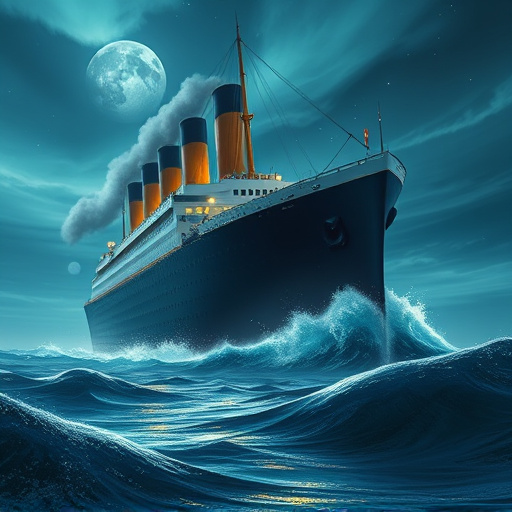The Titanic, an iconic ship that captivates imaginations even today, stands as a poignant reminder of both human ingenuity and tragedy. In this article, we explore the historical context of the Titanic‘s ill-fated journey and sinking, delve into passenger experiences and crew responsibilities, and uncover its enduring legacy through memorials, movies, and lessons learned from one of the world’s most famous maritime disasters.
The Historical Context: A Look at the Titanic's Journey and Sinking
The Titanic, launched in 1912, was a symbol of opulence and technological marvel, representing the pinnacle of maritime engineering at the time. Her journey began with great anticipation as she set sail from Southampton, England, on her maiden voyage to New York City. The ship carried over 2,200 passengers and crew members, representing diverse backgrounds and aspirations. This luxurious Titanic was renowned for its spacious accommodations, elegant dining halls, and state-of-the-art amenities, attracting the wealthy and famous of the era.
However, on April 14, 1912, tragedy struck. The Titanic collided with an iceberg in the North Atlantic Ocean, leading to one of the most infamous maritime disasters in history. Despite its advanced design and supposedly unsinkable reputation, the ship broke into two and sank within hours. This catastrophic event resulted in the loss of over 1,500 lives, leaving a lasting impact on maritime safety regulations. The Titanic‘s journey and subsequent sinking continue to captivate imaginations, serving as a poignant reminder of both human ingenuity and the unpredictable nature of the sea.
Life on Board: Passenger Experiences and Crew Responsibilities
Life aboard the Titanic was a unique experience, offering a glimpse into the opulence and challenges of early 20th-century travel. Passengers from all walks of life enjoyed lavish dining rooms, luxurious staterooms, and entertainment venues, creating an atmosphere of excitement and elegance. The ship’s crew played a vital role in maintaining this ambiance while ensuring the safety and comfort of every guest. Their responsibilities were vast, including managing accommodations, serving meals, organizing activities, and, most importantly, upholding strict safety protocols.
The passenger experience varied greatly depending on class, with First Class enjoying exclusive amenities like private balconies and luxurious suites. Meanwhile, Third Class passengers, though less affluent, found comfort in well-designed staterooms and communal spaces designed for relaxation and social interaction. The crew, consisting of highly trained professionals, worked tirelessly to cater to these diverse needs, ensuring every passenger had a memorable journey until the fateful night when the Titanic met its tragic end.
Legacy and Impact: Memorials, Movies, and Lessons Learned from the Titanic
The Titanic has left an indelible mark on history, its legacy extending far beyond the tragic night it sank. Memorials around the globe honor the lives lost, serving as a somber reminder of the fragility of human existence and the importance of resilience. These memorials, often in the form of monuments and museums, showcase the stories of passengers and crew, preserving their memories for future generations.
Movies have also played a significant role in keeping the Titanic‘s story alive. From classic films like A Night to Remember to more recent productions, each iteration has its own take on the disaster, attracting audiences worldwide. These cinematic interpretations not only entertain but also educate, imparting valuable lessons about love, class struggle, and the human spirit’s capacity for both good and evil. Through art imitating life, the Titanic‘s impact continues to resonate, shaping our understanding of history and inspiring reflection on the choices we make.
